When a toilet is continuously running, it wastes water and can cost you money. This can happen due to something as simple as a defective flush valve or flapper. Therefore, fixing your running toilet without a ball float is an easy and inexpensive way to get the job done right. The advantages of fixing a running toilet without a ball float are that it is much cheaper and easier to do than replacing the entire unit.
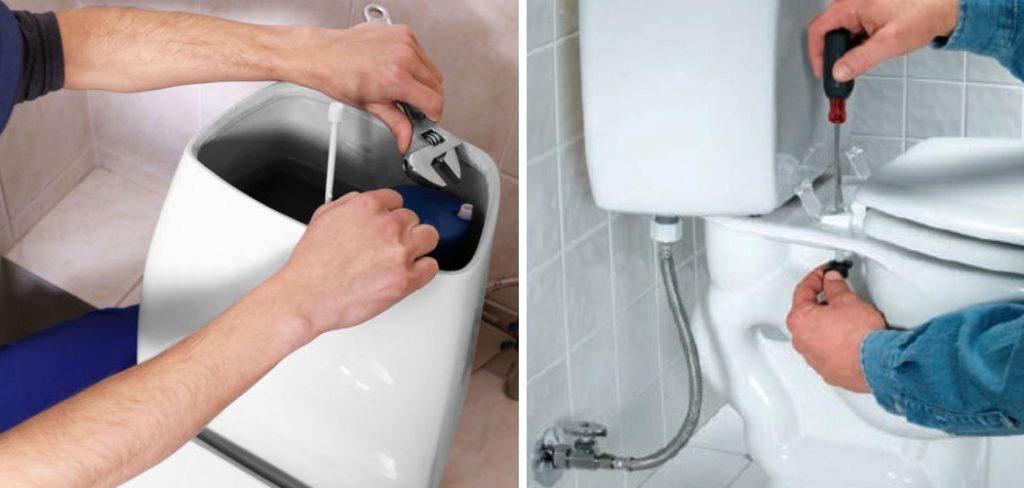
Additionally, it allows you to avoid the hassle and cost of purchasing a new part or hiring someone to install it for you. This method is also beneficial because it eliminates the need for specialized tools, such as plumbing wrenches, which can be expensive and difficult to use in tight spaces. This blog article provides step-by-step instructions on how to fix a running toilet without a ball float.
Step-by-step Instructions for How to Fix a Running Toilet Without a Ball Float
Step 1: Inspect the Problem Parts
Inspect the parts that are likely causing the problem. Check the flapper valve, fill tube, and flush lever arm or chain, as they may be worn out or defective. Take off the old flapper valve and use a new one in its place. Make sure it is properly sealed to the flush tank. Inspect the fill tube and make sure it is not blocked or kinked. Check the flush lever arm or chain and adjust them to ensure proper movement.
Step 2: Adjust the Water Level
Adjusting the water level in your toilet tank can help stop a running toilet without a ball float. First, turn off the shut-off valve controlling the toilet’s water flow. Then, flush the toilet to empty the tank and inspect the water level. If it is too high, adjust the float arm or valve until it reaches a proper level.
Step 3: Clean Out the Tank
It’s important to regularly clean out your toilet tank as debris can build up over time and interfere with the flushing action. To do this, turn off the toilet’s water supply and empty the tank. Once it is emptied, use a brush to scrub away any hard-water deposits or sediment that may be clogging up the parts.
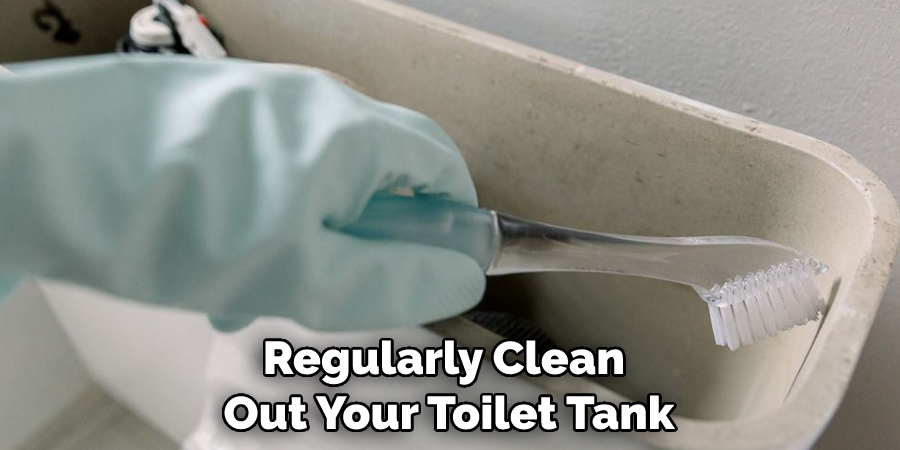
Step 4: Check for Leaks
Once all of the parts have been inspected and cleaned, it’s a good idea to check for any water leaks. To do this, turn on the water supply and let the tank fill up. Once it is full, flush the toilet and inspect underneath for any signs of leaking. If you find any leaks, tighten all connections with a wrench to stop them.
By following these steps, you can learn to fix a running toilet without a ball float. With the right tools and knowledge, you can successfully repair your toilet and prevent further issues from occurring.
Precautions for How to Fix a Running Toilet Without a Ball Float
- Disconnect the water supply to the toilet from the wall by shutting off the valve behind it. This will ensure that no water gets into the tank or bowl while you perform repairs.
- Take out any remaining water from the tank using a wet-dry vacuum cleaner or a bucket and sponge, as appropriate.
- Check the flapper chain and ensure that it is not too tight or loose so it can close the valve properly when flushed. If necessary, adjust its length to get the right tension.
- Inspect all of the parts in the tank for damage or excessive wear, such as a warped or broken flapper or a cracked fill valve. If any need to be replaced, ensure you get the right parts for your toilet model.
- When reassembling the tank, ensure all its components are securely fastened and properly connected.
- Once everything is back in place, turn on the water supply to the toilet, and test it by flushing it several times. If the running water stops after a few flushings, then your repairs were successful. Otherwise, you may need to perform additional adjustments or install new parts.
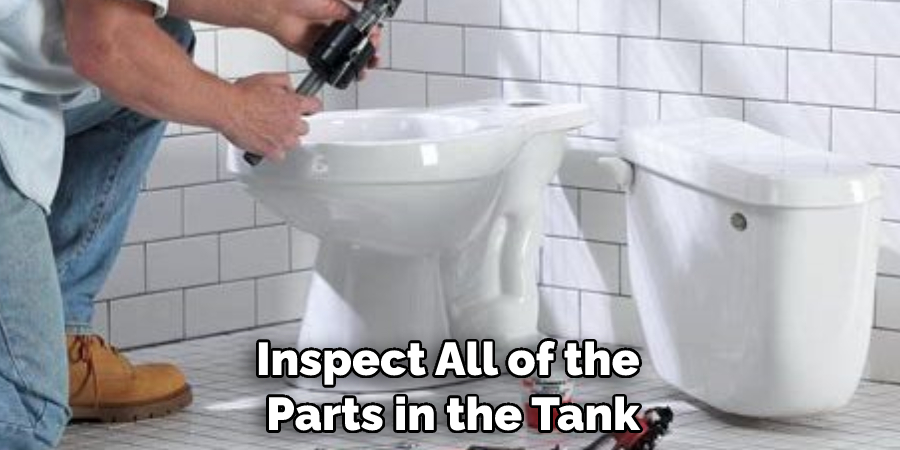
How Can You Clean the Fill Valve or Replace It if Necessary?
It is possible to fix a running toilet without a ball float by cleaning or replacing the fill valve. First, you need to unscrew the two screws on the side of the tank and lift off the top cover. Then, locate the fill valve and its related components. Unscrew any couplings around the valve for further access.
Once you have exposed the fill valve, you can clean it using a brush to remove any deposits. If this does not stop the running water, then you may need to replace the fill valve entirely with a new one of the same type and size. Reattach all parts and screws accordingly before filling up the tank with water again.
Finally, test out your toilet and ensure the running water has been stopped. If necessary, adjust any components as needed. If you cannot fix the toilet without a ball float, you might need to get one to solve the issue. Ball floats are inexpensive and easy to install, so it is worth getting one if all other solutions have failed.
Once you have the ball float, simply attach it to the fill valve as per its instructions and refill the tank with water again. Test out your toilet to ensure that the running water has been stopped. If necessary, adjust any components as needed.
How Can You Adjust the Chain Connecting the Flush Handle That Could Be Causing a Running Toilet Without a Ball Float?
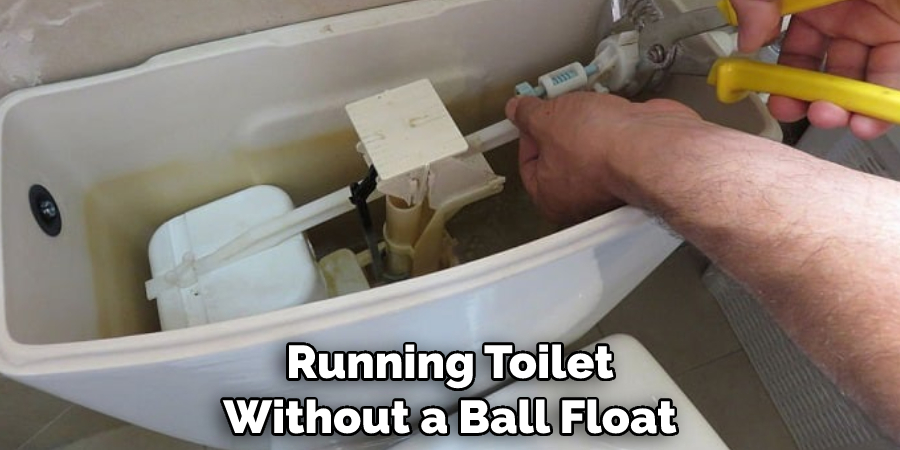
If you have a running toilet without a ball float, it may be caused by an improperly adjusted chain connecting the flush handle to the flapper. Adjusting this chain is simple and can often solve the problem with minimal effort.
To adjust the flapper chain, you’ll need to locate it near the bottom of your tank. It should be connected on one end to the flapper and the other to a lever, which is then attached to your flush handle. You’ll need to turn off the water supply going into your toilet and then flush it, so the tank is empty.
Now, you can gently pull down on the chain and check its length. The chain should be tight enough that the flapper cannot close completely when you release it. You’ll need to adjust it if it’s too loose or too tight. To make it tighter, simply tie an extra knot in the chain near the top of the flapper. For a looser adjustment, untie a knot or use a pair of pliers to snip away one link at a time carefully.
Do You Need to Call a Professional?
If you have tried all the steps listed above and still can’t seem to get your toilet to stop running, it might be time to call a professional. A plumbing technician will be able to look at the issue and determine if something else needs to be done. They may even recommend replacing parts like flappers and fill valves if necessary.
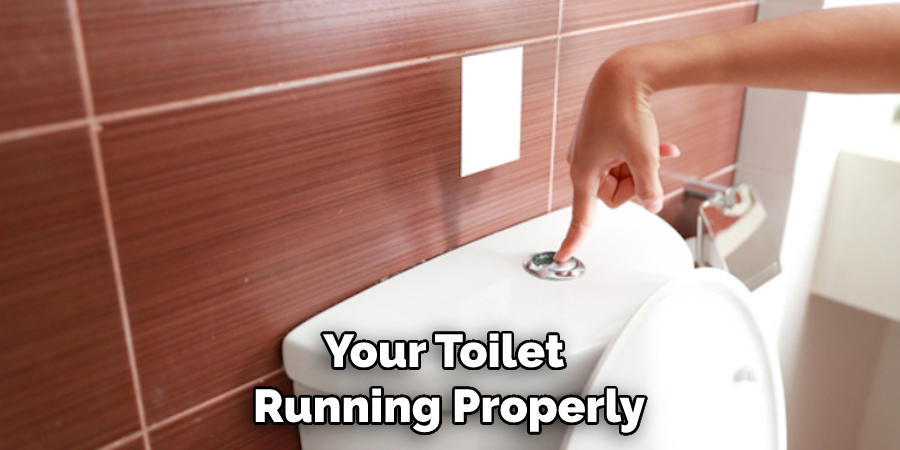
Whatever they suggest, make sure that you follow their instructions carefully and get it done right the first time around. This is the best way to ensure that your toilet will run correctly and not cost you more money in the long run. How to Fix a Running Toilet Without a Ball Float may seem impossible, but it can be done with the proper knowledge and a little bit of elbow grease. With patience and some help from a professional, you should have your toilet running properly in no time.
Conclusion
One of the main disadvantages of fixing a running toilet without a ball float is that it requires more time and effort than using a ball float. This type of repair often involves dismantling parts, such as the flush valve, to access and repair the underlying issue. Additionally, troubleshooting the issue can be difficult and time-consuming since there is no visual indicator when attempting this repair.
It is also important to note that without the float, the water level could become too high or too low, leading to further issues with your toilet. In conclusion, fixing a running toilet without a ball float is not as daunting of a task as it may seem. With the right tools and some basic knowledge, you can easily diagnose and address many common toilet issues.
It’s important to remember that the more complex an issue is, the better off you’ll be delegating the job to a professional plumber who is familiar with the task. Furthermore, always ensure you turn off the water supply before attempting any repair work on your toilet. I hope reading this post has helped you learn how to fix a running toilet without a ball float. Make sure the safety precautions are carried out in the order listed.

